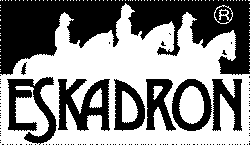Just one step!
Please confirm your registration using the link we sent you by email.
New
Horse
rider
Care & stable & feed
Dog
Collections
We have a wide range of Samshield Riding helmets in stock.
Maybe your favorite piece is already there.
The Belgian company Kentucky Horsewear is known for equestrian goods with beautiful designs.
Discover nowDiscover the most popular collection items from Pikeur, Eskadron & Co
Discover nowYour Benefits
We want your new riding and equestrian equipment to make you fast, reliable and undamaged to reach. You want to know what the Versand costs outside of Germany? Something fits or you don't like? No problem! You can place the order return within 14 days free of charge (DE)..
You have questions about a product or in general Lepona? Then use one of ours diverse contact options. You can reach us during business hours by phone, Whatsapp, email or social media. We are happy to help you with problems, questions and requests and look forward to your feedback.
Purchase on account, PayPal or prepayment? It's your choice.
The Lepona you can choose between many payment methods. We offer next to Purchase on account, Paypal or prepayment other payment methods.
 Large selection of brands
Large selection of brands
Here you will find your newest favorite item from currently around 90.000 items in stock from 100 brands. Our assortment ranges from renowned manufacturers such as Uvex, Pikeur and Sprenger to premium brands like Equestrian Stockholm, Kentucky Horsewear and Samshield. Discover our always new collections from Eskadron, Kingsland, Cavallo and Euro-Star.
Lepona is an equestrian online shop with a large selection of riding accessories such as riding trousers, riding helmets and saddle pads from popular brands such as Pikeur, Samshield and Equestrian Stockholm. Our employees all have their own horses or come from equestrian sports. In order to strengthen professional competence, we are active in a variety of sports and can be found in jumping and dressage tests up to the advanced level. We also have breeders in our repertoire of employees. So you can be sure that we can advise you professionally and with a lot of our own experience. Our love for horses drives us to become even better every day and to offer you even better service. If you notice something or want to say something nice to us, we are just a phone call away.
Lepona Service
So that you are completely satisfied with your online shopping experience, offers you Lepona some benefits and services. You get within Germany the Versand from 89 € purchase value and the return with DHL free of charge. The package usually reaches you within 1 - 3 working days. The Versandcosts for other service providers and countries, as well as all information about delivery times can be found here.
We offer you numerous ways to contact us. Do you have any questions about articles, our service or online shop? You can reach us at any time by email service @lepona.de or from Mon to Fri 08:00 to 12:30 and 13:30 to 16:00 by telephone on +49 (0)231 - 586 891 40. Do you prefer WhatsApp? No problem! send yours WhatsApp message to +0160 - 9347 0222 and we will get in touch with you as soon as possible. By the way: You can also find helpful information directly in our FAQ.
Since we are almost all riders ourselves, the quality of our brands is particularly important to us. We regularly test equestrian sports articles in order to be able to give you recommendations. Our wide range includes both premium brands and Eskadron, Pikeur, Uvex, Sprenger, Equestrian Stockholm, Samshield, Kentucky Horsewear or Veredus as well as cheaper brands like Busse, Waldhausen or Kavalkade. So you have a huge selection of equestrian items to suit your taste.












